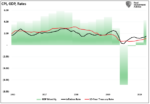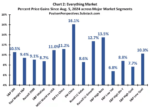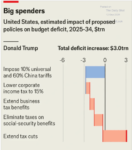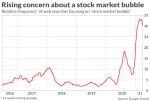In November last year, I discussed the importance of yield spreads, historically the market’s “early warning system.” To wit:” “Yield spreads are critical to understanding market sentiment and predicting potential stock market downturns. A credit spread refers to the difference in yield between two bonds of similar maturity but different credit quality. This comparison often …
Read More »2025-04-14





















































































































